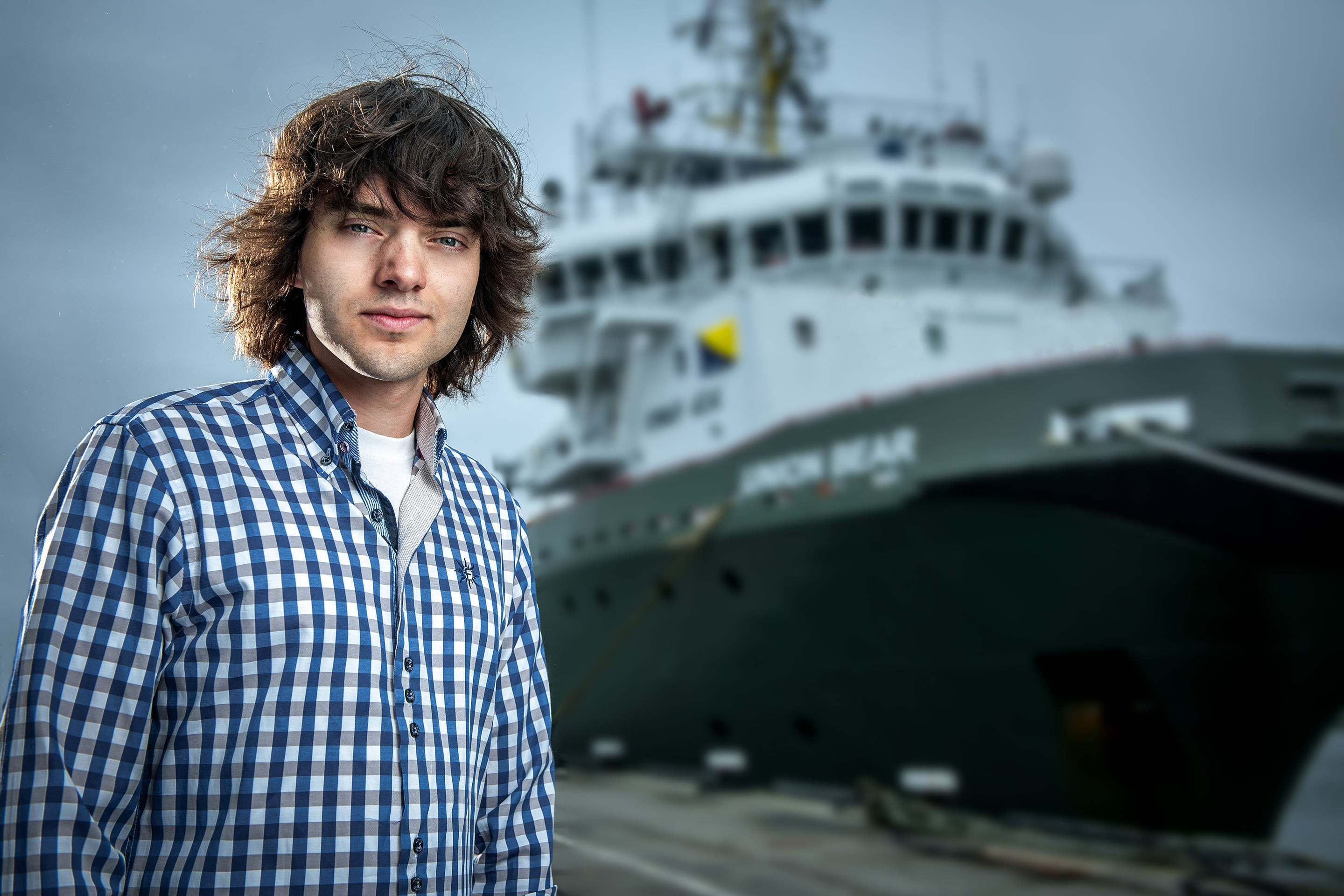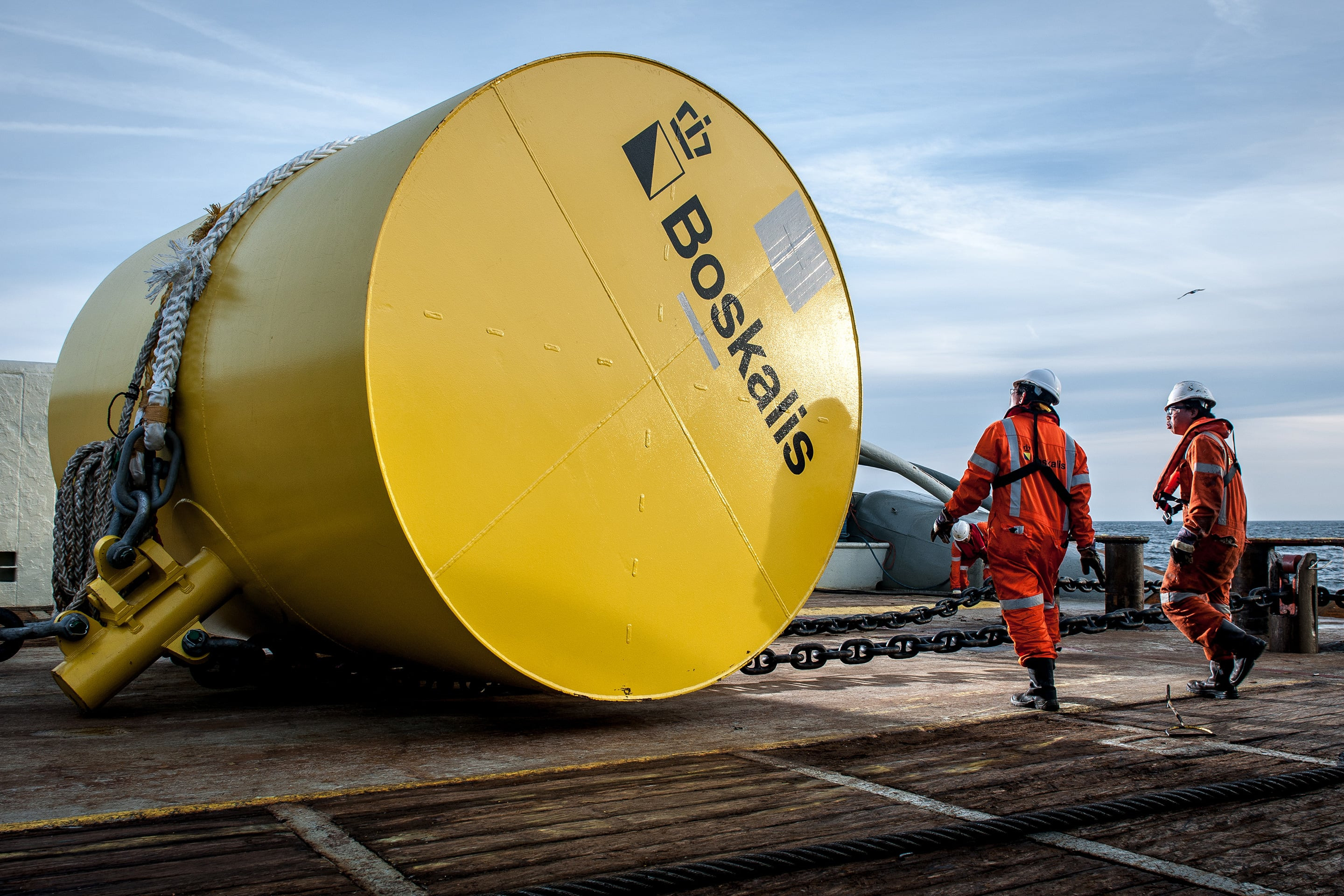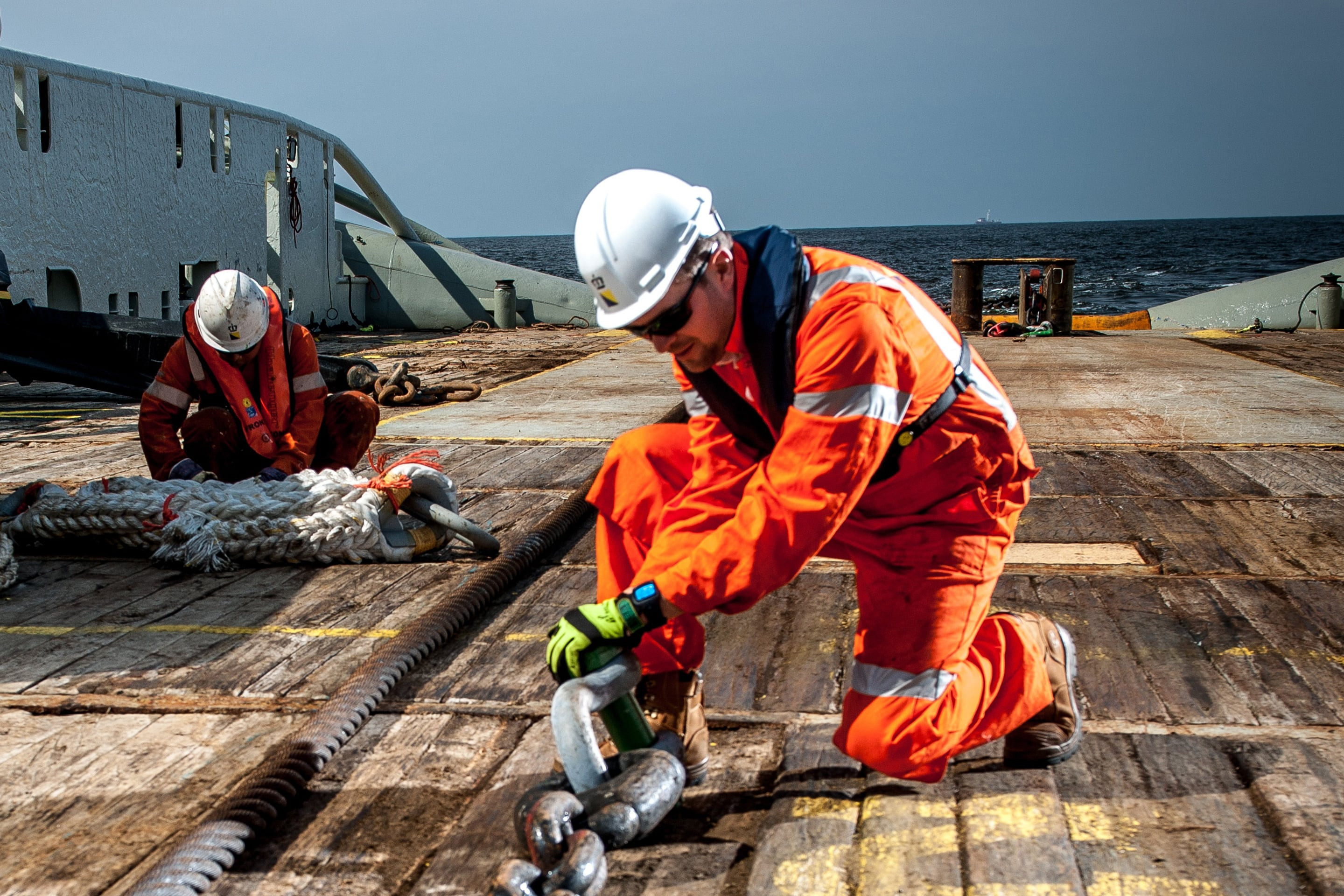At the age of 22 Dutch inventor and entrepreneur Boyan Slat is taking on one of the biggest environmental challenges we face today – how to rid the world’s oceans of plastics. Boyan is the youngest ever recipient of the UN’s highest environmental award ‘Champion of the Earth’, Foreign Policy and Forbes have featured him in their Global Thinkers and 30 Under 30 lists respectively, and TIME Magazine chose The Ocean Cleanup as one of the best inventions of 2015. Boskalis is one of the main sponsors of the prototype test, which is currently taking place in the North Sea.
Boyan’s floating barrier – The Ocean Cleanup Array – can be applied at any scale but Boyan’s current proposal aims to develop an installation of up to 100 kilometers to clean up the Great Pacific Garbage Patch between Hawaii and California. Model calculations indicate that half of this giant plastic nuisance could be gone in a decade by deploying the barrier.
Where did the inspiration come from to embark on this task to rid the oceans of plastic, which many would consider overwhelming?
“I first encountered the problem when I was 16 years old diving in Greece and there were more plastic bags than fish and I wondered why nobody was doing anything about it.”
“However, I realized very quickly that the oceans are so huge it would probably take 79,000 years and billions of dollars using the traditional cleaning methods of vessels and nets. I considered why go after the plastic if the plastic can come to you via the currents? We should use the oceans’ energy to our advantage. I considered it further as a high school project and then at Delft University of Technology where I was studying Aerospace Engineering. I listened to the lectures and looked at how I could use knowledge about fatigue issues and aerodynamic forces. Then I decided to drop out of university to see if I could get the idea off the ground.”
How do you perceive the global response to the plastic pollution problem?
“When I left university I didn’t know what would be possible. At first it was quite hard – nothing happened – but then I highlighted the issue on the internet and it went viral; millions of people shared my TED Talk and we raised 90,000 euro for a feasibility study. I built a team, which was largely made up of volunteers at that point, and eventually the crowdfunding campaign raised 2.2 million euros. Interest came from across the globe – more than 40,000 people donated in 160 countries. There was no disagreement that we should solve this problem.”
Can you explain how your system works?
“I realized that coastlines are pretty good at ‘catching plastic’ but unfortunately there is no landmass out at sea near these ocean gyres. Instead, I proposed that we deploy very long static floating barriers, which act as a ‘coastline’. The ocean then does the job itself. The core principle is to create a velocity difference between the plastic and the barrier and then use the current to our advantage.”
“The plastic is spread out over a very large area, perhaps 100 kilograms per square kilometer and these plastic garbage patches can be several million square kilometers in size. So we have to concentrate it before we collect it. The Ocean Cleanup is a giant V-shaped barrier. The barrier passively concentrates the plastic by orders of magnitude using natural ocean currents.”
Recently you achieved a very important milestone — the North Sea Prototype. This design has attracted a lot of attention, as well as 1.5 million euro funding — a third of which came from Boskalis. What are you hoping to achieve with the installation of the prototype?
“The feasibility study looked into the conceptual risks but the North Sea Prototype, which is a 100-meter long full-scale segment of the barrier, 23 kilometers off the Dutch coast, examines the structural integrity of the barrier in a harsh environment like the North Sea. It has been in place since June and already faced massive forces such as 3-meter significant wave heights, which are already more severe than a Pacific storm that will only occur once every 100 years!”




Can you outline how Boskalis has supported The Ocean Cleanup?
“Actually several Boskalis people have been thinking along with us for quite a while during the concept phase and giving us help with the practical elements as they have vast experience of operations offshore. We have very strong modeling expertise but Boskalis guys, who have been working offshore for 30 years, can immediately see any potential problems. This help has been of great value to the team. Then six months ago CEO Peter Berdowski agreed to work with us whereby Boskalis would transport and install the North Sea prototype as sponsoring in kind.”
“Of course, every time you do something that has never been done before you come across issues, but it all went very smoothly. Boskalis has been very flexible. If something has taken longer than expected, everyone would really push and make it happen. This has been a crucial element during the project. This is such a novel design and different from the traditional oil and gas business, so perseverance and flexibility are needed.”
After the North Sea prototype, what is the next step?
“In the short term we will carry out an aerial survey with a C-130 Hercules transport aircraft. This will conduct visuals at a 400 meter altitude over the Great Pacific Garbage Patch to measure the debris by Lidar surveys and observers. The Hercules will be flying for 12 hours plus, and is able to create 3D images of ghost nets for example, which can be up to 80 meters and weigh up to a ton! In a few days it is expected to cover some 6,000 square kilometers.”
“This follows on from the ‘mega-expedition’ we carried out in 2015 when 30 vessels collected plastics and also created the first high resolution map in the Pacific over an 18 square kilometer area.”
“We are also preparing the pilot project where the main focus of our engineering team is how the Ocean Cleanup Array (which could be up to 100 kilometers) can be kept at its location and anchored to the seabed in a cost effective manner and in such massive depths (the ocean is 4.5 kilometers deep at the planned site). It is important to stress that this barrier is very different from an oil boom, which is only used for a few days – the Ocean Cleanup Array has to be in place for 10 years!”
“We are also considering how the collection of the garbage will be carried out. It is easy to think about the commercial method of conveyor belts and pumps in a ship but a buffering system is being looked at where people are not needed all the time offshore.”
I realized very quickly that the oceans are so huge it would probably take 79,000 years and billions of dollars using the traditional cleaning methods of vessels and nets.
How much funding is needed to see this innovation installed in the Pacific and who should pay in your opinion?
“It is everyone’s problem but no one is legally responsible. Perhaps the cost of preventing and repairing damage from plastics could be covered in the cost of using plastics. For example, in a similar way to carbon tax, but on plastic. However, even carbon tax is also a long shot and politics… If governments don’t take action trade associations may take their own steps.”
“Ultimately a budget of several hundred million euros is required but we believe it is doable. I think the most likely way is funding through companies and organizations which are very keen to contribute to the clean up, and in return it is good for their engagement with employees and customers and ultimately the massive upside is cleaning the ocean! Additionally, The Ocean Cleanup results in a revenue stream because the recycled plastic is such high-grade material.” (Boyan points to his sunglasses which are made from Pacific ‘garbage’.) I think it will happen. We are hopeful we can start in the Pacific before 2020.”
The name of the Boskalis Magazine is Creating New Horizons – what defines a ‘new horizon’ in your book?
“The main thing is to have a clean Pacific but I hope we can use technology to make things better again. Often there is a negative bias towards the use of technology but it is the most potent tool we have to change things. We found an intact plastic helmet from 1989 in our mega expedition and many of the plastic particles have probably entered the oceans in the fifties and sixties. Around 97% of the pieces of plastic are larger than 5 mm.”
“Plastic pollution is getting worse by the day. We want people to be inspired – the campaign is not about merely preventing the situation from getting worse but about making it better!”
